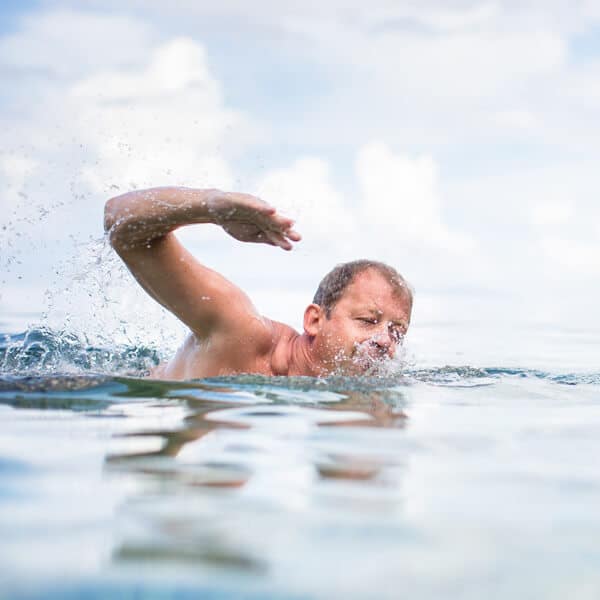Shoulder Labral Tears
Causes & Symptoms of Shoulder Labral Tears
Labral tears can occur in the shoulder as a result of sudden, traumatic injuries or repetitive shoulder motions. A direct blow to the shoulder, a fall onto your outstretched arm, improper lifting of a heavy object, or a sudden overhead reach (for example, trying to stop yourself from falling or sliding) are all situations that can result in a labral tear in the shoulder. A labral tear may occur alongside other shoulder injuries, including dislocations.
Shoulder labral tears are also common among athletes and workers whose sports or occupational activities require repetitive shoulder motions. Sometimes, a labral tear may extend to the biceps tendon.
Common symptoms of shoulder labral tears include shoulder instability, dislocation, pain when lifting the arm, decreased strength and range of motion, and catching, locking, popping, or grinding sensations when moving the shoulder. These symptoms are similar to other shoulder injuries, so it is important to seek help from a highly qualified professional like Dr. Cahill so that you can get an accurate diagnosis and start the right treatment plan.
Surgery for Shoulder Labral Tears
Dr. Cahill uses arthroscopy to diagnose and treat labral tears in the shoulder. Arthroscopy is a minimally invasive procedure that allows our surgeons to diagnose and treat shoulder labral tears through much smaller incisions than an open procedure. This often leads to less blood loss, less pain after surgery, and a quicker recovery.
To perform the procedure, your surgeon will make a small incision to insert the arthroscope into the shoulder joint. The arthroscope displays images on a monitor so that he can view the labrum, confirm the diagnosis, and determine the extent of the injury.
If the tear is confined to the labrum and does not involve any of the tendons attached to it, your surgeon will remove the torn flap of tissue and correct any problems associated with the injury. If a tendon or ligament is also torn or detached, your surgeon will need to repair or reattach it. These repairs are also done with arthroscopy, using additional small incisions to insert operating instruments. This procedure can often be done on an outpatient basis.
Recovering from Labral Tear Surgery
After shoulder labral surgery, most patients are able to return home the same day. Nerve blocks administered during the procedure typically provide pain relief for up to 3 days after surgery, which helps with pain during the initial recovery period.
Dr. Cahill may advise you to keep your arm in a sling for up to 3-6 weeks. Rehabilitation will also be an important part of the recovery process, starting with passive exercises to improve range of motion and graduating to strengthening exercises after the sling has been removed.
Depending on the extent of the injury and surgical repairs needed, it can take as long as 4-6 months for patients to be cleared to resume all sports and work-related activities. However, once fully recovered, the vast majority of patients are able to return to their work or sport with decreased pain and better shoulder function.
Shoulder Labral Tear Surgery in Hackensack, NJ
Dr. James Cahill is fellowship trained in sports medicine and has over 20 years of experience in orthopedic surgery, including labral tear surgery. He also works with many worker’s compensation organizations throughout New Jersey, including Bergen Risk, Horizon Casualty Services, Liberty Mutual, and Fireman’s Fund to help patients with work-related shoulder injuries get back to work safely and effectively. If you would like to learn more, or want to schedule an appointment with Dr. Cahill, please call our office at (201) 489-0022.

About Shoulder Labral Tear Surgery
The labrum is a ring of cartilage around the shoulder socket that helps to stabilize the shoulder and prevent it from dislocating. Several tendons also attach to the labrum, including the biceps tendon. A labral tear can cause pain and shoulder instability, affecting your ability to use the shoulder for athletic or work-related activities.
In some cases, labral tears can be treated effectively with nonsurgical treatments like medication, rest, and rehabilitation exercises. If symptoms persist, surgery may be recommended.
Dr. James Cahill has over 20 years of experience with orthopedic surgery and is fellowship trained in sports medicine, including arthroscopic shoulder procedures like labral tear surgery. He also works with many worker’s compensation groups throughout New Jersey, including Bergen Risk, Horizon Casualty Services, Liberty Mutual, and Fireman’s Fund. Our goal is to help patients get back to work and sports safely and effectively, whether or not surgery is needed.